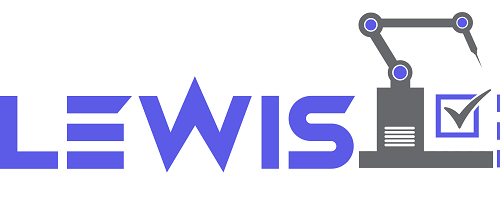Ask Lewis Bass: A Question About Thermographic Inspections
Welcome to another blog in our ongoing series, Ask Lewis Bass!
This series features actual submitted questions from companies in the industries we provide engineering safety consulting services to.
Topics covered include those associated with our work in 3rd party field labeling, SEMI S2/S8/EMC/F47 testing and design, CE Marking evaluations, and general engineering safety consulting questions.
Question:
Hi Lewis Bass,
I have a question about emissivity and how it may skew or hide accurate thermographic readings on equipment in my facility.
How can I make sure I am taking accurate thermographic readings?
Asked by Joe in Fremont, CA
Lewis Bass:
Joe,
This is a great topic to dive into. More often than not, emissivity is not an issue while doing a thermographic inspection at a facility. This is because panels are most likely opened for direct usage of the thermal imaging camera and most pieces of equipment being evaluated by the camera are not usually shielded in any fashion. But what about pieces of equipment that have components hidden under surfaces with a high (greater than .5) emissivity percentage?
First, let’s start off with the definition of emissivity from the UK’s National Metrology Institute below:
Emissivity is defined as the ratio of the energy radiated from a material’s surface to that radiated from a perfect emitter, known as a black-body, at the same temperature and wavelength and under the same viewing conditions. It is a dimensionless number between 0 (for a perfect reflector) and 1 (for a perfect emitter).
The emissivity of a surface depends not only on the material but also on the nature of the surface. For example, a clean and polished metal surface will have a low emissivity, whereas a roughened and oxidized metal surface will have a high emissivity. The emissivity also depends on the temperature of the surface as well as wavelength and angle.
So, what does this mean when we take into account machinery with a .5 or 50% emissivity rate?
Enter reflectivity: in situations when a surface has 50% emissivity, it also follows this must mean that another .5 or 50% is also being reflected from both the surface AND potentially from other heat sources elsewhere in your facility. This could be providing a false heat reading on the surface of the machinery or equipment.
According to Infrared Imaging Services of Vermont emissivity and reflectivity are in the judgement of the thermographer:
The higher the reflectivity number is the more “shiny” the object appears in both visible light and infrared. A surface, which has an “E” value of .5, is also .5 reflective. This means that 50% of the energy seen by the infrared imager may be coming from another source being reflected off of the target surface. The reflected energy may be from a source colder than the target’s surface or hotter than the target’s surface. Unfortunately, the infrared imager cannot tell the difference between reflected and emitted energy. That determination is left to the trained thermographer to understand and properly set the emissivity and reflectivity controls in the infrared imager, in order to be able to accurately measure temperatures.
How can you address this in your facility and make sure readings are accurate for your machinery and equipment?
Never take readings from any shielded surface of any piece of equipment or machine. In all cases try to take direct line of sight measurements to components, panels, and moving parts subjected to intense friction. Consider (if it is not possible to evaluate the machine without disassembling it) installing thermal imaging windows in your equipment to provide a direct line of sight to the key components within.
I hope this answers your question and gives you some next steps to consider, Joe.
Do you have a question for Lewis Bass?
If you have a question you would like to ask our engineering team about, and don’t mind it being featured in one of our upcoming blog posts, please contact us and reference “Ask Lewis Bass” in the message body.
Include any helpful context along with the question you’d like us to answer for you. All company contact information except for a first name, is anonymized for privacy reasons.



